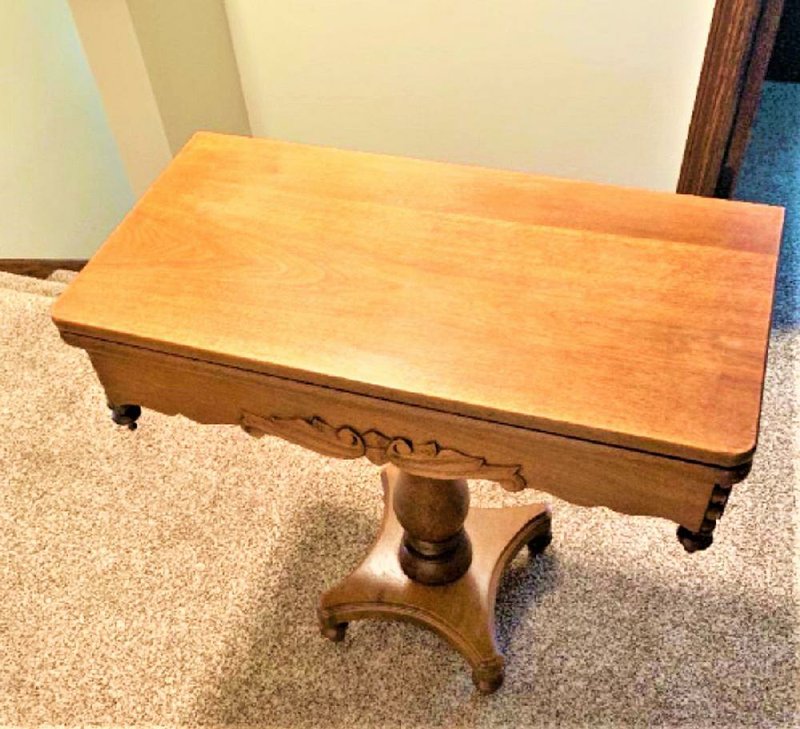DEAR HELAINE AND JOE: I am wondering if you can help me with information about a card table my wife inherited from her great-aunt. It has been in the family for many years. As you can see from the photos, the tabletop is hinged. It opens up to card table size and then can be spun around to accommodate four people at the table. Under one side of the top there is a space that looks like it was meant to store cards/games, etc.
Thank you very much.
J.S., Minneapolis
DEAR J.S.: Card and game tables have been around for a long time. It has been speculated that the first were just boards placed on top of low chests to facilitate playing games like backgammon, chess, draughts (checkers) and dice. Playing cards did not come into vogue until the Elizabethan era. Card tables began to appear in English and American homes after the Queen Anne period (1702-1714).
By the late 18th and early 19th century, card tables were quite common in American and British homes. Some were quite elaborate, with intricate inlay and extravagantly carved features such as richly embellished legs and pedestals. Some card tables can be quite valuable. But what about the one in today's question? How old is it and what are its origins?
First, let us say that the wood is walnut. It has attractive drop pendants on the corners that are echoed in the four feet that support the pedestal base. The pedestal itself is nicely turned and is vasiform with some nice ring embellishments. It's nice, but not the sort of thing that wows a collector.
The card table is probably American, but it has two things that have significant negative effect on its monetary value and interest on the current antiques market. The first problem is the sweet little card table has been refinished to within an inch of its life. It is what an old antiques dealer we used to know called "slick as a ribbon."
Some might say all the old has been rubbed off, leaving behind a piece of furniture that does not show the beautiful patina of its age. Refinishing can be done respectfully and carefully to leave behind a surface that is clean and refreshed, not sanded down and stripped of life and history.
But as sad as the refinished state of the card table is, its bigger problem is it is Victorian and probably dates to the third quarter of the 19th century. Unless a Victorian piece of furniture has a great deal of pizzazz or was made by a famous maker, this sort of furniture is suffering on the current market and anonymous pieces often go begging.
Still, we feel if the card table were offered for sale in a good Midwestern auction, it would probably bring in somewhere in the $175 to $225 range and retail around $450.
Helaine Fendelman and Joe Rosson have written books on antiques. Do you have an item you'd like to know more about? Contact them at Joe Rosson, 2504 Seymour Ave., Knoxville, TN 37917, or email them at treasures@knology.net. If you'd like your question to be considered for their column, please include a focused, high-resolution photo of the subject with your inquiry.
HomeStyle on 07/20/2019
